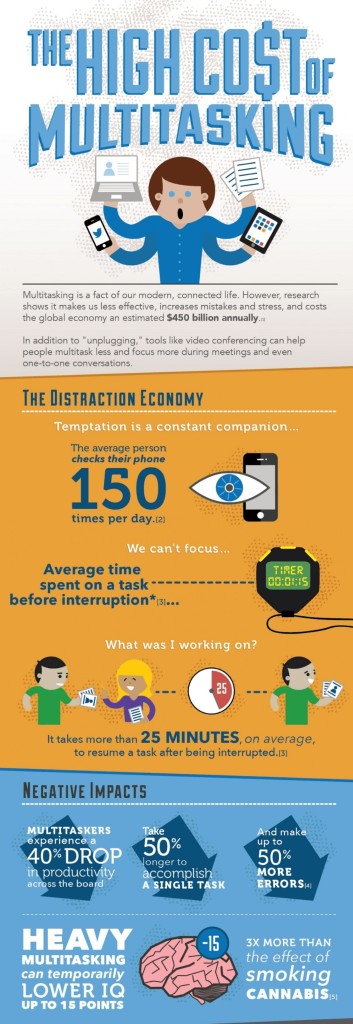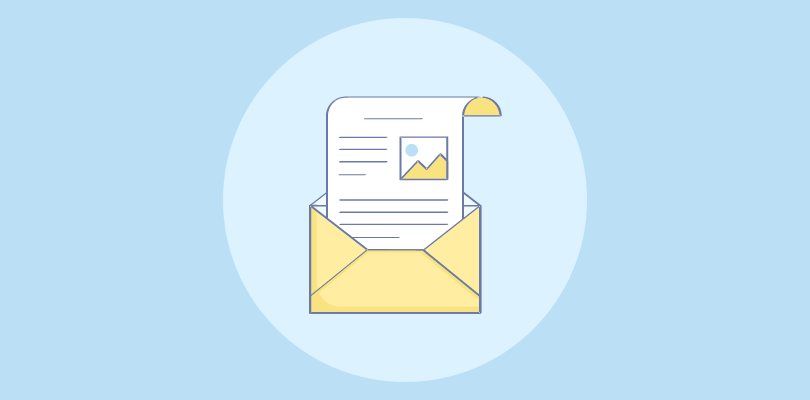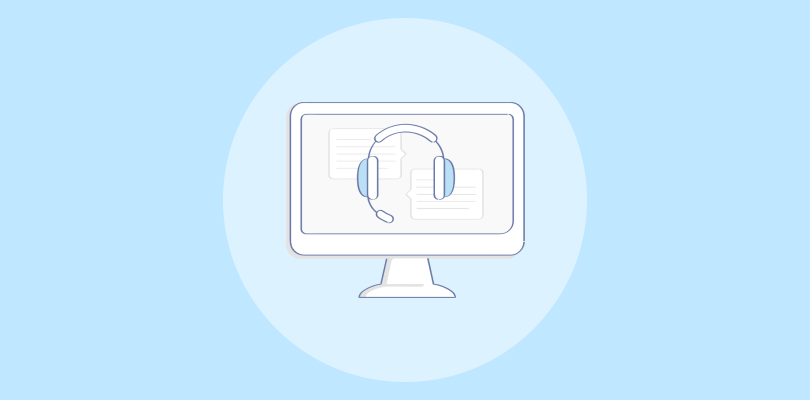Are you looking for tips to increase customer service productivity?
Well, you are not alone! Modern customer service teams have more tasks on their plates than they can manage. There are ticket backlogs running in triple digits, infuriated customers who want their problems to be resolved first, and of course, countless social media mentions.
Amidst this chaos, as a customer service manager or leader, you might often wish you had a magic wand that would erase all work. But real productivity is not about wishing, rather doing.
When you have a productive workplace, you can get more accomplished in a limited time. Agents can resolve more issues, collaborate faster, and join forces to improve the customer experience.
In this blog, we will understand the positive correlation between customer service and productivity, explore the role of customer support software in tracking relevant metrics, and finally discuss how to improve productivity in customer service.
Stay tuned if you want to support customers with a high-performance team!
What is Customer Service Productivity?
Customer service productivity refers to the output your customer support team delivers in a given period of time. In simple terms, it is the measure of how efficient your team is in resolving customer queries or problems.
Many businesses measure customer service productivity by monitoring the number of tickets resolved by an agent or the entire team in a given day, week, or month. However, some businesses measure productivity by tracking customer satisfaction or high-rated customer service interactions.
How Do You Measure Productivity in Customer Service?
Customer service is not simply about taking more calls or replying to more emails. While the number of tickets resolved is an important aspect you need to consider, you also need to make sure the customer is happy with the result. After all, keeping customers delighted is the main goal of any growing business.
Here are some top metrics to measure productivity in customer service:
1. First Contact Resolution (FCR)
FCR rate refers to the number of tickets that are resolved in the first contact itself. So how does this help you measure customer service staff productivity? Well, a high FCR rate means that issues are not bounced from agent to agent and are instead resolved quickly. Only a single contact from the customer is needed, which can significantly improve the customer experience.
2. Ticket Resolution Time
Ticket resolution time refers to the total time taken by your team to resolve a customer service case. Unlike FCR, it can involve multiple contacts, multiple channels, and even multiple agents. A low average ticket resolution time will mean that agents are quickly resolving tickets without unnecessary delay.
3. Total Tickets Resolved in a Period
This is as direct as it can get. Many businesses calculate customer service productivity by tracking the total number of tickets resolved in a given time period – a day, week, month, or quarter. This is a quantitative customer service metric that can measure both agent productivity and team productivity. You can compare the performance of your different agents and recognize or reward them accordingly.
4. Customer Satisfaction Score CSAT
Unlike previous metrics, the CSAT score measures the quality of customer service interactions. For instance, customers are offered surveys where they can rate how satisfied they are with your efforts. Questions such as “Based on your recent support call, how easy or difficult was it to interact with our agent?” are usually shared with customers right after their support interaction. A high CSAT score reflects that a majority of customers are delighted with your service.
How are Customer Service and Productivity Related?
In the current business landscape, customer expectations have gone through the roof. To meet and exceed expectations, you need a dedicated and productive team. Period.
According to a Statista report, 77% of customers expect an instant response on live chat. Even on channels such as social media, 40% of customers demand an immediate answer.

Therefore, to meet customer expectations and support them round-the-clock, you need a high-performance customer service team. Productive CS employees can help you:
- Tackle more customer issues in a time-crunch environment
- Create a competitive yet positive work culture
- Build customer trust and enhance satisfaction
- Provide a better return on investment (ROI) for your business
10 Customer Service Productivity Tips
“How to increase productivity in customer service” is a question that has baffled many entrepreneurs. They realize the value of high-productivity teams but don’t know where to start.
If you are sailing in the same boat, here are the top ten customer service productivity tips:
1. Set Clear Roles & Responsibilities
Imagine you join a company, and they just ask to work on a project with no explicit mention of your roles and responsibilities. It is natural for you to question your place in the team. Should you focus on the budget, or should you focus on managing the work of your subordinates?
To avoid such confusion, defining the roles and responsibilities of your agents is the first step in the right direction. Helping an employee find the right job improves the employee experience and job satisfaction.
But how do you assign different roles to different agents?
You can begin by asking: What issue has this position been created to address? What potential problems do we expect the agent to solve? For instance, for someone with great interpersonal skills, you can assign them the job of interacting with customers in person. Similarly, those with great technical skills can take customer calls and troubleshoot their technical problems.
Assigning the right roles and responsibilities gives a clear path to your team and enhances their overall productivity.
2. Build a Dedicated Self-Service Portal

Building a dedicated self-service knowledge base is one of the best ways to increase productivity and improve customer service.
A knowledge base might take some time to create. However, it can help you deflect a majority of your tickets by empowering customers to help themselves. Simply encourage your employees to contribute to help articles and make it easier for everyone to find relevant knowledge.
But what exactly should your knowledge base include?
- FAQs: Creating a vast collection of FAQs or Frequently asked questions is one of the simplest ways to empower customers. You can cover common customer questions such as, “How to reset an account password?”, “I am eligible for a full refund?”, etc.
- Video Tutorials: Video tutorials are a great way to engage customers and support them. You can create simple videos to share troubleshooting steps and guide customers to fix their issues independently.
- Training Modules: Training modules can help your new employees learn skills that are relevant to their job. Even existing employees can access these modules and refresh their skills at their convenience.
Read More: How to Create an Internal Knowledge Base
3. Automate Manual Work Using a Customer Support Software
Manually managing your customer service operations can be the biggest hindrance that is keeping you from being productive. A cloud-based customer support software might hold the right answers.
Implementing such tools provides just-in-time access to necessary resources, helping agents resolve issues more efficiently and effectively
Here are some examples of automation features that can work wonders for your team:
- Canned responses: Canned responses can save you from the pain of typing the same replies repeatedly. You can create canned responses for chats, emails, or text messages and respond to common customer questions in minutes.
- Chatbots: Chatbots is another great feature of customer support software that can help you assist customers, generate leads, and close more sales. Well-designed bots can interact with customers initially and then route conversations to the right departments.

- Automated surveys: You can share automated surveys with customers as soon as their ticket is marked as closed or resolved. Customers can offer their valuable feedback and help your team improve in the process.
Read More: 10 Service Desk Automation Ideas that Boost Performance and Quality
4. Avoid Multitasking at All Costs
A lot of employees are under the illusion that they are good at multitasking. They think they can whip through customer emails while simultaneously handling multiple live chat sessions. The truth is you might not be as efficient as you think.
Multitasking might be really hurting your customer service team. According to a Forbes article, a whopping 98% of the population doesn’t multitask very well. In fact, multitasking can reduce productivity by up to 80 percent.

Customer service is all about paying attention to your customers’ needs and apprehensions. Even if you are great at multitasking, you cannot possibly pay adequate attention to more than one customer at a time.
The frequent back and forth between conversations can make you respond to customers in a hurry, be inattentive to their problems, and share responses that were meant for someone else. Therefore, in your quest for high productivity, multitasking is definitely not the answer.
5. Embrace Healthy Competition
While there is always cutthroat competition among different businesses, your office should not be a war zone. You can always embrace healthy competition among your agents and enhance customer service productivity.
Workplace competition can help make your team more productive and focused. However, unnecessary pressure can stress them out and crush their confidence. Therefore, creating the right balance is important.
Here are some tips to encourage healthy competition in your team:
- Teach the benefits of healthy competition: Many employees might love the idea of competition, but they might not know how to keep it friendly. Encourage healthy debate and allow your team members to share what might be keeping them from being productive.
- Set team goals: While it is great to create individual goals for customer service agents, you must also encourage teamwork. Hold team-based activities, where different teams can compete with one another. To keep things interesting, frequently shuffle the members of each team.
- Share honest performance feedback: Honest feedback can help your teammates realize their own effectiveness and understand how close they are to meeting expectations. Customer service managers must hold regular meetings to share honest feedback.
Read More: Ten Tips to Motivate Your Customer Support Team
6. Develop Skillful Experts
You must have heard the old adage, “Jack of all trades, master of none.” Well, this idea does not always work in the field of customer service as you need subject matter experts who can get the job done quickly.
Rather than training every employee on every skill, identify their key talents, allow them to hone those specific skills, and develop a customer service team of experts.
For instance, if you have a staff member who is a computer nerd and fond of technology, you can train him to expand his technical knowledge further. So if any technical issue comes up, he can be your go-to person. The same stands true for dealing with customers face-to-face. Agents with great interpersonal skills and positive personalities can get you better results.
We all know how issues are often escalated from one person to another and are never really resolved. Therefore, this customer service productivity strategy will help you have the right person in place for every challenge that knocks on the door.
7. Minimize Unnecessary Distractions
No matter how attentive or focused you are, your work environment will always have some sort of distraction. At the office, there are colleagues asking you to go on a break with them, while at home, there might be kids or pets who are the apple of your eye.
To increase customer service staff productivity, you need to minimize unnecessary distractions and create a work environment where employees can focus on their tasks.
While small distractions can lower your stress and help you refresh your mind, too much time away from work can mean sabotaging your own productivity.

Here are some steps to avoid distractions at the workplace:
- Surround yourself with productive people: Focus is often contagious; therefore, you must surround yourself with focused people who are less likely to distract you.
- Avoid online distractions: Avoid spending too much time engaging with your friends on social media. Draw necessary boundaries while at work and keep a separate time for reading blogs, posts, etc.
- Make time for breaks: As discussed above, sometimes distractions can be good for you. Take regular breaks in between tasks but also be aware of when you should return to your desk.
8. Track Customer Service Productivity Metrics
To avoid corporate politics and biases, it is important to create a fair system to monitor work. A great way to achieve this is by targeting the right customer service productivity metrics.
The numbers don’t lie. Track performance metrics and KPIs that are relevant to your business goals and improve the customer experience.
But how do you track the right metrics? You can leverage customer support software that offers insightful reports and analytics surrounding your support operations. Although we have already discussed some important metrics in this blog, here are a few more that can prove to be handy.
First response time: This metric shows the average time taken by your team to share the first response with a customer. The response time can vary from channel to channel. For instance, customers often demand an immediate response over live chat compared to email.
Ticket backlog: Ticket backlog refers to the number of open or pending tickets. An overwhelming amount of unresolved tickets can either mean that your team is not performing at its best, or you need to hire more agents to support the increased demand.
Read More: 15 Help Desk Metrics to Improve Customer Support
9. Dedicate Time for “FUN”
Work should not simply be just about work. The typical 9-5 work schedule should involve fun sessions where your employees can take their minds off their overwhelming tasks, act without being judged, and, most importantly, have fun.
“Where people aren’t having any fun, they seldom produce good work” – David Ogilvy
But how can dedicating time for fun increase your customer service team’s productivity? Good question! Research by Oxford University has found that happy employees are 13 percent more productive compared to unhappy employees. They do not necessarily work more hours than their counterparts but show more productivity.
Here are some tips to add a healthy dose of fun into your work environment:
- Create a gratitude circle: Devote time for weekly sessions where employees can give shout-outs to team members and appreciate their efforts.
- Go out: Go out often with your team members to nearby places. Customer service managers can take their team out to lunch, movie, or any local exhibition.
- Build a recreational area: Convert a small space into a recreational area where employees can sit, chat, and relax. Your recreational area can have books, a TT table, a pool table, or other indoor games.
10. Reward Your Productive Staff
Different things can motivate different employees to perform at their productive best. However, as most think, a fat paycheck or bonus is definitely not the only thing that drives people to work hard and do well.
Employees are ready to put all in but only when their efforts are recognized and rewarded. But only 14% of employees strongly agree that the performance reviews they receive inspire them to improve.
So how do you reward your most productive customer service representatives?
For a start, even small gestures such as cheering for reps who got a perfect customer rating can do wonders for their daily dose of motivation. For the long term, you can create an employee rewards program to share incentives with your most hardworking employees. The idea is to create a system that fairly recognizes employees who put in their best effort.
Rather than always offering monetary incentives, you can even share personalized rewards. For instance, if a team member always said how he was looking to buy a small coffee machine, you can reward him with the same and make him feel special.
FREE. All Features. FOREVER!
Try our Forever FREE account with all premium features!
Enhance Customer Service Productivity & Retain Customers!
Customer service employees are an integral part of your support operations. They interact with customers, try to understand their problems, and resolve issues. A highly productive customer service team can contribute to the overall success of your business and create delightful experiences for the customers.
When customers can easily contact your business and get quick responses to their queries, they are bound to stay loyal to your brand. In fact, faster service can mean more sales conversions and better recommendations.
To increase customer service productivity, you must set clear roles right from day one. Embrace healthy competition, minimize unnecessary distractions, and automate manual processes using the right tools. Don’t just be busy, be productive!
 Tips
Tips
We’d love to hear your tips & suggestions on this article!
FREE. All Features. FOREVER!
Try our Forever FREE account with all premium features!

 We'd love your feedback!
We'd love your feedback! Thanks for your feedback!
Thanks for your feedback!







